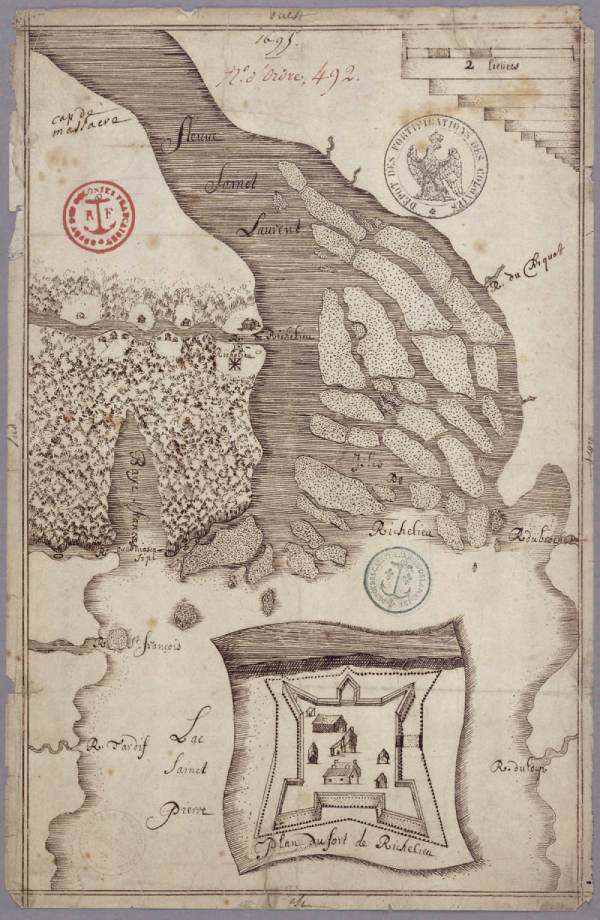Fort Richelieu National Historic Site

© A. Leblond de Brumath. Précis d'histoire du Canada à l'usage des écoles primaires. Librairie Saint-Joseph, Cadieux & Derome, Montréal, 1895 (p. 35 MIC/B524\08677 GEN, public domain)
Fort Richelieu was designated as a national historic site in 1923.
The Historic Sites and Monuments Board of Canada reviewed this designation in 2022.
Commemorative plaque: du Roi Street, near du Fort Street, Sorel, QuebecFootnote 1
Forts Richelieu and Sorel
In 1642, Governor Charles Huault de Montmagny constructed Fort Richelieu near this location to protect the settlements of the colony and the fur trade. At the time, geopolitical upheavals led to clashes in the region between the Algonquin-Anishinaabe, the Huron-Wendat and the French, who were military and trade partners, and the Haudenosaunee Confederacy, who were allies of the Dutch. The fort was abandoned in 1646. As the conflicts continued, Captain Pierre de Saurel erected Fort Sorel in 1665, as part of the policy to fortify the Richelieu Valley and to support the offensive against the Haudenosaunee Confederacy.
Reasons for designation
From 1642 to 1646, this fort, located at the mouth of the Richelieu River, was responsible for protecting New France’s fur trade and for countering raids made by members of the Haudenosaunee Confederacy both in the St. Lawrence Valley and on the Ottawa River.
At a time of geopolitical upheaval, this strategic region was a setting for rivalry between several First Nations as they sought access to furs and land. This included the Algonquin Anishinabe, the Wolastoqiyik, the Innu, and the Huron-Wendat, who were all military and trade allies with the French, and members of the Haudenosaunee Confederacy, who were allies and trade partners with the Dutch and were attempting to increase their access to resources by extending their territory further north.
A new fort was constructed in 1665 as part of France’s colonial policy aimed at fortifying the Richelieu Valley and ensuring better control over its territory, as well as helping in the offensive against the Haudenosaunee Confederacy. The fort’s role in the supply network made it an essential component of the defence infrastructure during the French colonial period. The fort was used sporadically until the 19th century and was then destroyed.
Review of designation
Reviews are undertaken on an ongoing basis to ensure that designations reflect current scholarship, shifts in historical understandings, and a range of voices, perspectives and experiences in Canadian society.
In 2022, this designation was reviewed due to the absence of a layer of history in the initial reasons for designation and in the commemorative plaque text. The plaque text, approved in 1980, was written from a French colonial perspective and did not accurately reflect the important role that First Nations played in the history of Fort Richelieu. The only mention of First Nations was in reference to the Haudenosaunee (Iroquois) as an enemy of the French.
The reasons for designation were expanded to include greater historical context and the participation of several First Nations in the history of the fort. The plaque text was modified to include the role of First Nations and provide greater context of geopolitical events. A new plaque will be installed as time and resources permit.
Source: Historic Sites and Monuments Board of Canada, Minutes, April 2022.
The National Program of Historical Commemoration relies on the participation of Canadians in the identification of places, events and persons of national historic significance. Any member of the public can nominate a topic for consideration by the Historic Sites and Monuments Board of Canada.
- Date modified :

